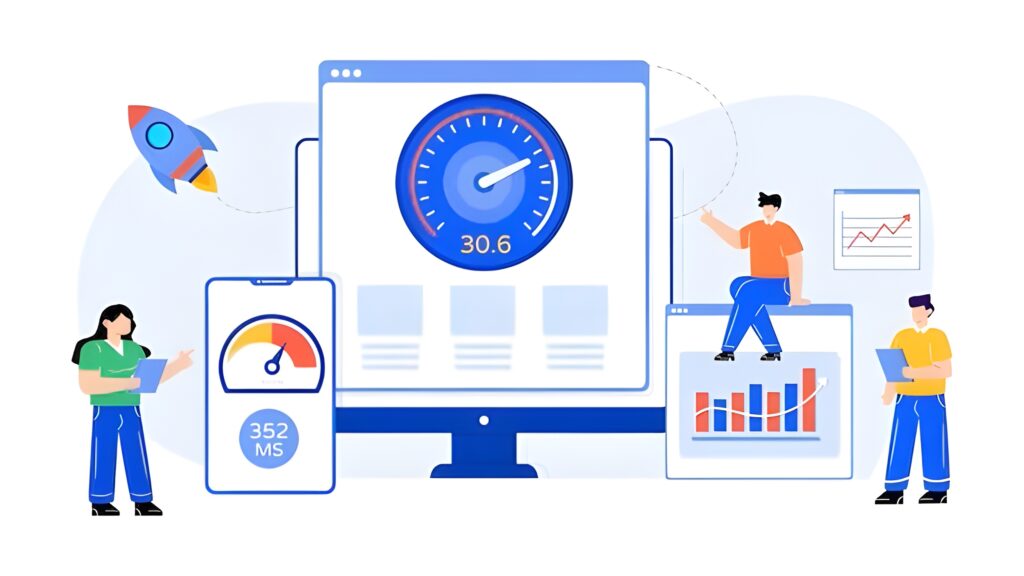Where Web Design is Headed
Web design is evolving fast. New tech and rising user expectations have turned websites from static online brochures into dynamic, interactive spaces. By 2025, standing out online isn’t just about looking good — it’s about creating experiences that keep visitors coming back.
Whether you’re launching a blog, running an online store, or building your first portfolio site, knowing what’s ahead will help you stay competitive. Here’s a look at the trends set to define web design through 2025.
Major Web Design Trends Through 2025
Dark Mode Goes Mainstream
Dark mode is no longer just a trendy option. It’s becoming a standard feature thanks to benefits like reduced eye strain, longer battery life on devices, and a sleek, modern aesthetic.
By 2025, expect more sites to default to dark interfaces, or at least offer seamless toggles between light and dark themes. It’s also better for visual hierarchy and improves readability on mobile devices — aligning with Google’s emphasis on user experience and Core Web Vitals.
AI Integration and Smarter UX
AI isn’t only for chatbots anymore. By 2025, AI will drive how sites adapt to visitors in real time — analyzing behavior, recommending products, or even generating content layouts on the fly.
Examples include:
- Chatbots offering instant, personalized support
- Predictive search that finishes queries as users type
- AI-powered layouts that adapt based on past visitor interactions
For anyone focused on conversions and user retention, “AI in web design” and “smart UX” will be essential concepts.
3D and Immersive Visuals
Web graphics have come a long way. With more powerful browsers and devices, 3D elements are making sites feel more lifelike. Expect to see:
- Animated 3D icons and buttons
- Parallax scrolling that adds depth
- Interactive AR or VR displays, especially for products
This helps keep visitors engaged longer and cuts bounce rates — both big wins for SEO.
Voice User Interfaces (VUI)
Voice search isn’t just for smartphones or smart speakers anymore. Websites are beginning to integrate voice commands for navigation and searches.
With the rise of voice assistants everywhere, optimizing for voice means:
- Using conversational keywords
- Structuring content for featured snippets (since voice pulls from these)
- Testing how easily users can navigate without touch
For accessibility and mobile-first users, this will be a huge shift by 2025.
Personalized Experiences
Users today expect content tailored just for them. By 2025, personalization on websites will be even more granular — based on location, time of day, or past browsing history.
Think:
- Product recommendations that change on repeat visits
- Localized content that updates by city or country
- Dynamic landing pages that adjust to user behavior
For eCommerce especially, this is critical to drive sales and improve customer loyalty.
Minimalist Navigation and Micro-Interactions
Less is more. Sites are moving toward cleaner designs with fewer menu items and subtle animations that guide the user’s journey. Small touches like hover effects, scrolling animations, or button clicks make a site feel polished without overwhelming visitors.
Expect 2025 websites to use micro-interactions not just for flair but to subtly direct user behavior — keeping experiences smooth and intuitive.
Eco-Friendly, Lightweight Design
Sustainability is now a concern even online. A lighter site isn’t just faster — it uses less energy, helping reduce its carbon footprint.
That means:
- Streamlined code
- Optimized, compressed images and videos
- Designs that load fewer external resources
Expect more companies to market themselves as having “eco-friendly websites” or following sustainable web design practices.
Final Takeaway
Web design by 2025 is all about creating sites that are smarter, faster, and more personal. Trends like dark mode, AI-driven UX, 3D visuals, and lightweight sustainable design aren’t just nice extras — they’re becoming the new standard.
Before starting a new site (or revamping an old one), check if your design is keeping pace. Focus on what matters most: performance, personalization, and purpose. That’s how you’ll make sure your website isn’t just ready for 2025 — but stands out in it.


